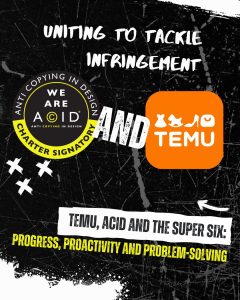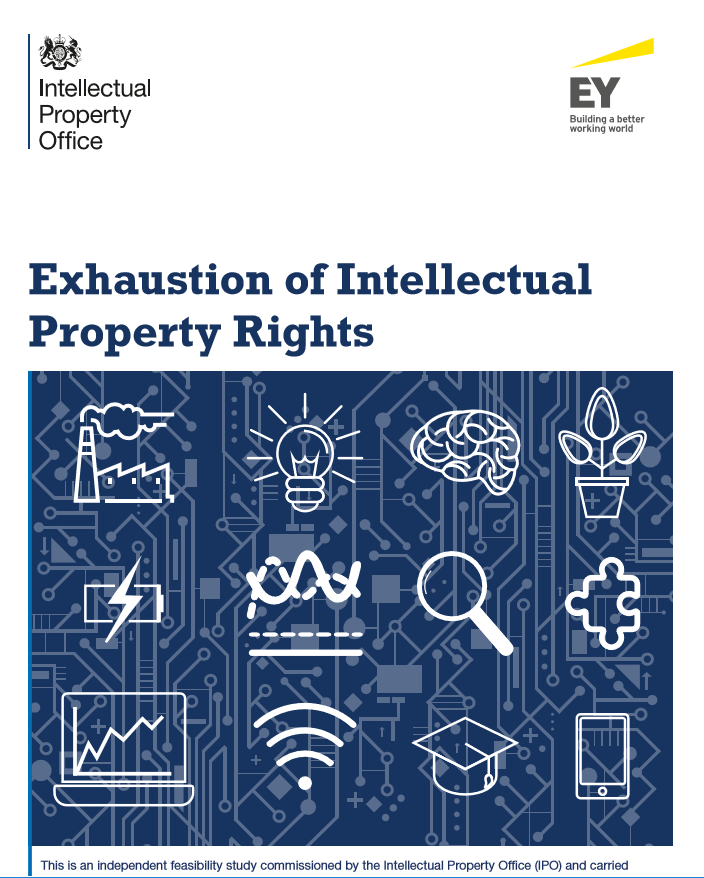

ACID welcomes recent research carried out by Ernst and Young commissioned by the UK Intellectual Property Office to conduct a feasibility study to determine whether it would be possible to estimate the scale of parallel trade across the economy, and to suggest potential research methodologies for the future. This was commissioned to inform the Government’s assessment and analysis of the options for the Intellectual Property Rights (IPR) exhaustion regime when the UK leaves the EU.
The study builds understanding of the existing data to estimate parallel trade, what could be collected, its quality, and whether the data could be used to infer quantities of parallel trade. It also establishes the views of a sample of stakeholders on different potential regimes and their assessment of the consequences of a change of the IPR exhaustion regime.
In terms of scope, this feasibility study does not suggest or recommend a future exhaustion regime but establishes the current data on parallel trade and what, if any, future work could improve from this baseline. See full research document here.
Dids Macdonald, OBE., CEO of ACID said, “It would appear that from this exhaustive study there is still no methodology for effectively measuring the scale and impact of parallel trade. This conclusion is similar to the recent research carried out by the IPO on Design Rights Infringement in that it is becoming increasing difficult, despite exhaustive research, to establish clear policy for measurement underpinned by sound methodology. This begs the question, is the current research model fit for purpose when the goalposts and actors are changing constantly and consistently?”
1.1 Review covered economic literature, stakeholder interviews and a telephone survey
There were three elements to the feasibility study: a review of economic data and literature on parallel trade, stakeholder interviews across a number of sectors, and a telephone survey. The results of this study are set out in this report.
2 | Exhaustion of Intellectual Property rights – a feasibility study
The survey fieldwork was carried out between the 9th and 30th November 2018. However, despite contacting over 900 businesses it was not possible to generate any successful interviews. Section 4.2 of the main report covers the breakdown of response rate and reasons for refusal.
1.2 Scope for future research and analysis
Given the feasibility study has suggested that there is limited data available on the scale and range of parallel trade, Section 6 of this report identifies options for future research, including an evaluation of their strengths and weaknesses.
Exhaustion of Intellectual Property rights – a feasibility study | 3
The second approach matches and blends different datasets together, including company accounts data, trade data and intellectual property data to create a new dataset. The challenges in matching data on trade in generic products to specific company accounts data seem to be very significant, and it is not clear how approved trade on behalf of the rights holders would be taken into account in the calculation. The steps involved seem challenging, would take a lot of resource input, and may not be feasible given data constraints with unregistered rights such as copyright and unregistered designs.
The third approach estimates the opportunity or motive for parallel trade by comparing the price differentials for the same good in different markets. This involves measuring the opportunity for parallel trade by comparing the price differentials between the UK and other markets, then making some assessment of transaction costs, distribution costs and other factors that affect the scope for arbitrage. This would provide an upper estimate of the potential size of parallel trade at those prices, assuming that opportunities are fully exploited by the market. It would be a very labour-intensive process to compile price data across enough sectors at disaggregated product level across different national markets, to make the analysis precise and representative. Even with detailed product-level data, there would need to be assumptions about tradability (transportation costs), the extent of price cutting by rights holders, pass through and price elasticity.
In summary, no research option that has a strong likelihood of successfully measuring parallel trade and its impact, has been identified. Although this feasibility study identifies potential avenues for future research, these are not without complications and there is not a clear and conclusive research methodology that can reliably estimate the scale and impacts of potential changes to the parallel trade regime in the United Kingdom.
See full research document here.
Spread the Word

Latest News





Newsletter Sign-Up
| Cookie | Duration | Description |
|---|---|---|
| cookielawinfo-checkbox-analytics | 11 months | This cookie is set by GDPR Cookie Consent plugin. The cookie is used to store the user consent for the cookies in the category "Analytics". |
| cookielawinfo-checkbox-functional | 11 months | The cookie is set by GDPR cookie consent to record the user consent for the cookies in the category "Functional". |
| cookielawinfo-checkbox-necessary | 11 months | This cookie is set by GDPR Cookie Consent plugin. The cookies is used to store the user consent for the cookies in the category "Necessary". |
| cookielawinfo-checkbox-others | 11 months | This cookie is set by GDPR Cookie Consent plugin. The cookie is used to store the user consent for the cookies in the category "Other. |
| cookielawinfo-checkbox-performance | 11 months | This cookie is set by GDPR Cookie Consent plugin. The cookie is used to store the user consent for the cookies in the category "Performance". |
| viewed_cookie_policy | 11 months | The cookie is set by the GDPR Cookie Consent plugin and is used to store whether or not user has consented to the use of cookies. It does not store any personal data. |